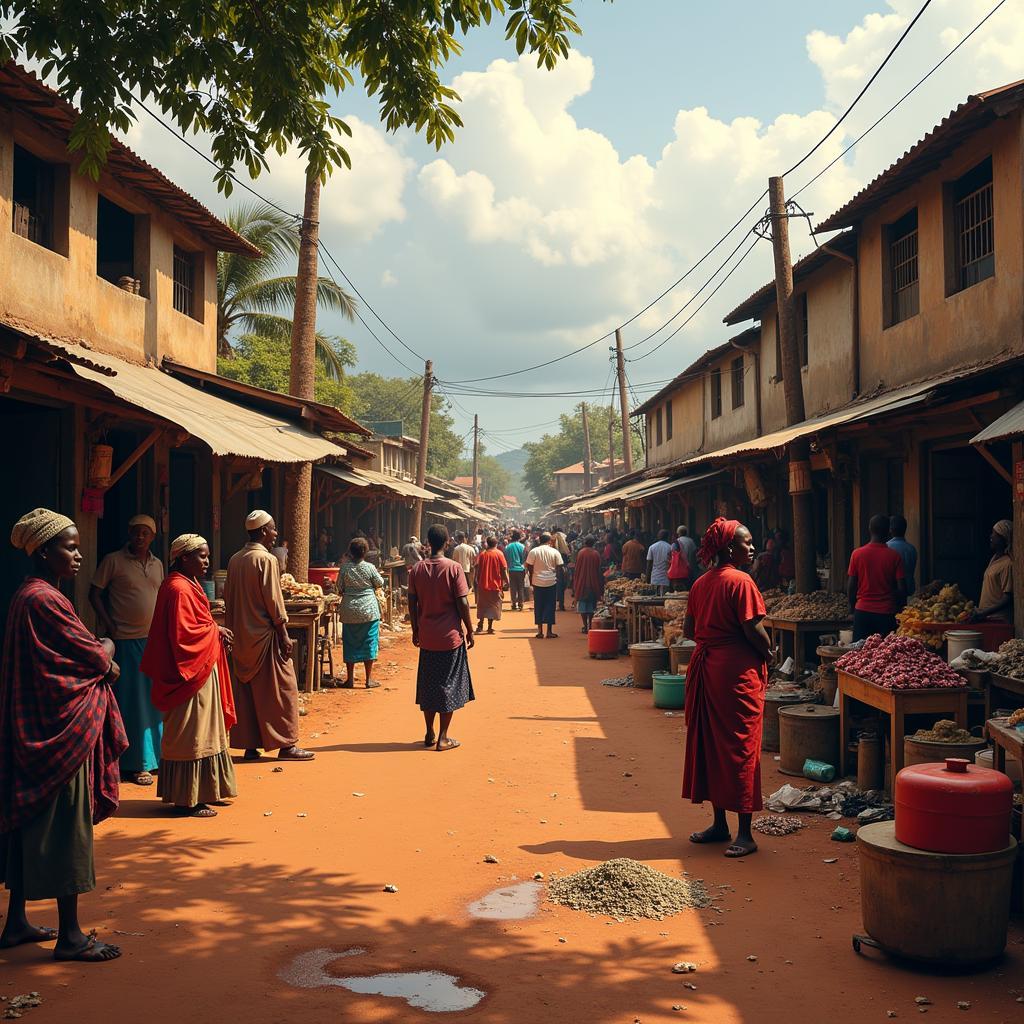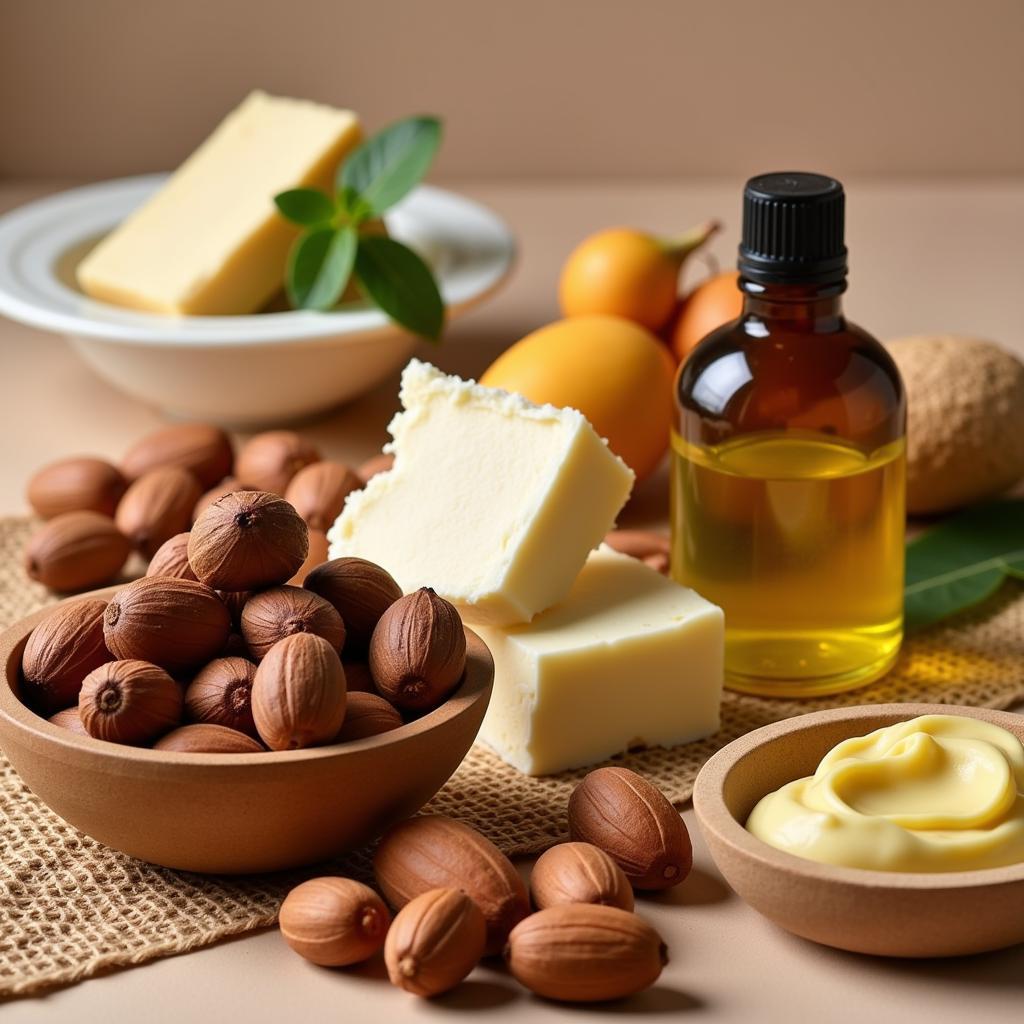Exploring the Rich Tapestry of African Himba Tribe
The African Himba tribe, nestled in the harsh yet beautiful landscapes of northern Namibia, offers a captivating glimpse into a culture deeply rooted in tradition. Their unique customs, striking appearance, and resilient spirit have captivated the world’s imagination, making them a subject of fascination for anthropologists, photographers, and travelers alike. This article delves into the rich tapestry of Himba life, exploring their history, customs, and connection to their ancestral land.
Unveiling the History of the African Himba Tribe
The Himba people, a semi-nomadic pastoralist group, are believed to have migrated to the Kaokoland region of Namibia centuries ago. They are part of the Herero people, sharing a common ancestry and language, Otjiherero. However, over time, the Himba developed distinct cultural practices that set them apart. Their history is interwoven with tales of resilience, adaptation, and a deep connection to their environment. They have faced numerous challenges, including droughts, conflicts, and pressures from the modern world, yet they have managed to preserve their cultural identity.
Navigating the Challenges of Modern Life: The African Himba Tribe
Maintaining their traditional way of life in the face of modernization presents a complex challenge for the African Himba. Balancing the preservation of their cultural heritage with the opportunities and pressures of the 21st century requires careful navigation. This involves engaging with the outside world while also protecting their unique customs and values.
The Distinctive Customs and Traditions of the African Himba
The Himba are renowned for their distinctive customs, which are deeply intertwined with their environment and social structure. Their traditional clothing, hairstyles, and body adornments are not merely aesthetic choices; they are powerful symbols of their cultural identity and social status. The ochre paste, known as otjize, that they apply to their skin and hair serves as protection from the sun and insects, but also holds significant cultural meaning, symbolizing their connection to the earth and their ancestors. Their unique hairstyles, intricate jewelry, and the way they carry themselves all tell a story of their heritage and belonging.
The Significance of Otjize in Himba Culture
The practice of applying otjize, a mixture of ochre, butterfat, and aromatic herbs, is a defining characteristic of the African Himba. This reddish paste not only protects their skin from the harsh sun but also signifies their cultural identity and social status within the community. It is a daily ritual that connects them to their ancestors and the land.
The Social Structure and Beliefs of the African Himba People
The Himba’s social structure is based on patrilineal descent, with families organized into clans and sub-clans. Their traditional beliefs revolve around ancestor worship and a deep reverence for the natural world. Their livestock, primarily cattle and goats, are not only a source of sustenance but also represent wealth and status within the community. The Himba’s understanding of the environment and their ability to adapt to its challenges are integral to their survival and cultural continuity.
The Role of Livestock in Himba Society
Livestock, particularly cattle, play a vital role in the social and economic life of the African Himba tribe. Cattle are a symbol of wealth and status, and they are central to many of their traditions and ceremonies. The Himba’s deep connection to their livestock reflects their pastoralist lifestyle and their dependence on these animals for survival.
Conclusion: Preserving the Legacy of the African Himba
The African Himba tribe stands as a testament to the resilience and adaptability of human culture. Their unique traditions, deep connection to their ancestral lands, and ability to navigate the challenges of the modern world make them a truly remarkable people. It is crucial that we continue to learn from and support the Himba in their efforts to preserve their cultural heritage for generations to come.
FAQ
- What is the significance of the red ochre paste used by the Himba? The red ochre paste, otjize, serves as sun protection, insect repellent, and a symbol of cultural identity and beauty.
- What is the primary livelihood of the Himba people? The Himba are primarily pastoralists, relying on livestock, particularly cattle and goats, for their livelihood.
- Where do the Himba people live? The Himba primarily reside in the Kunene Region of northern Namibia and southern Angola.
- What language do the Himba speak? The Himba speak Otjiherero, a Bantu language.
- What are some of the challenges facing the Himba today? Modernization, drought, and land rights issues are some of the challenges the Himba face.
- How can I learn more about the Himba people? Further research can be done online, through documentaries, and by visiting reputable organizations working with the Himba community.
- Are there any ethical considerations when visiting the Himba? Yes, it is important to approach visits with respect and cultural sensitivity, avoiding exploitative tourism practices.
You can explore more about African cultures in these related articles: [link to other articles on your website].
Need further assistance? Please contact us: Phone: +255768904061, Email: kaka.mag@gmail.com or visit us at: Mbarali DC Mawindi, Kangaga, Tanzania. We have a 24/7 customer service team.


